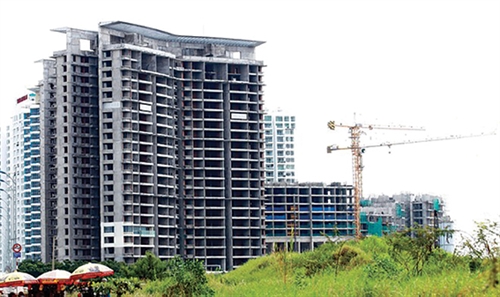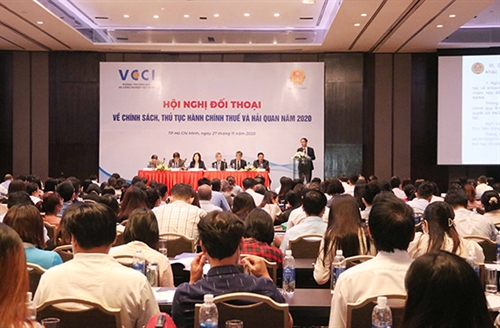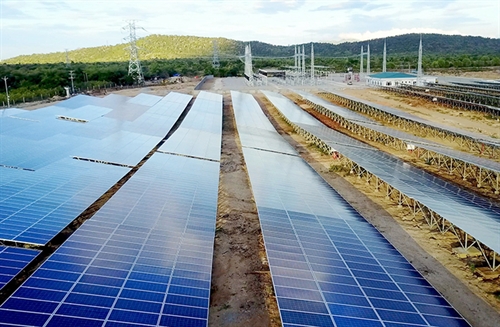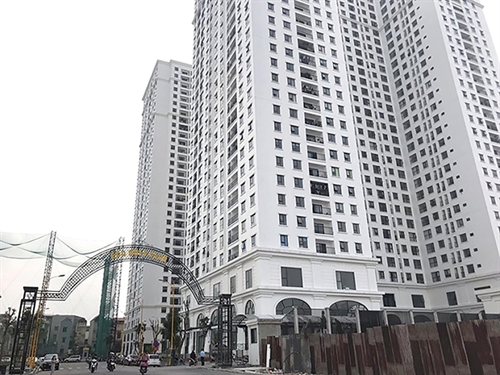Group of students from Class 4234b
Hanoi Law University[1]
Over the past years, the law on secured transactions and secured transaction registration has gradually become complete, meeting the requirements of the real socio-economic life in Vietnam and the process of global economic integration. There is no doubt about the important role of secured transactions in credit growth and economic development. One key important element of secured transactions is collateral (secured assets). Both parties (the securing party and secured creditor) should pay close attention to determination of assets used as collateral when entering into a contract. However, the current legal framework applicable to collateral remains controversial.
General requirements on collateral
Secured assets (also known as collateral) are property that securing parties use to secure the performance of a civil obligation toward the secured party. Collateral includes all kinds of assets specified in Article 105 of the 2015 Civil Code (the Code) that may be tangible property or intangible property, immovable property or movable property, existing property, or after-acquired property.
Collateral, however, must meet the general conditions specified in Article 295 of the Code as follows:
Collateral must be owned by the debtor, except cases of retention of title and lien on the property
Under Article 295.1 of the Code, there are two exceptions to this requirement in which property is not owned by the securing party. Based on this provision, the bank should pay attention to minimize risks when accepting an asset as collateral that is subject to a retention of title clause as collateral for performance of the obligation.
In the measure of retention of title, a secured obligation is the obligation to pay an amount that the purchaser has not yet paid to the seller under the contract. The securing party is the purchaser, and the secured party is the seller. Besides, the object of this measure is the object of the sale contract.
In line with Article 331.1 of the Code, when establishing retention of title, the collateral is not under the ownership of the purchaser. Although the seller has performed the obligation to hand over the property to the purchaser and the purchaser has received the property, the ownership of the property remains with the seller. The purchaser is not yet the owner of the property until he fulfills the payment obligation.
Therefore, the sellers are allowed to use property subject to retention of title clauses as collateral but the purchasers are not. The purchasers have only the rights specified in Article 333 of the Code such as using the property and enjoying the yield and income derived.
It should be noted that in case when the bank accepts collateral subject to retention of title and the purchaser takes ownership of the collateral after fulfilling the payment obligation, the secured transaction between the bank and the seller will terminate under Article 422.5 of the Code.
 |
| Kenton Node project, located in Nha Be district of Ho Chi Minh City, was mortgaged at many banks with a total collateral value of nearly VND 8 trillion__Photo: Internet |
Collateral may be generally describable but must be identifiable
Article 295 of the Code sets forth this condition under which the secured property may be generally described, but must be identifiable. General description means that the secured property may be generally described with no specific details (e.g., in case the collateral is goods, materials or an account balance, etc.) and future property. However, the collateral must be identifiable for the parties to know exactly over what property the secured party has rights especially on enforcement. The property may have not been formed or partially formed. So it is impossible to give an exact description of it.
In particular, an asset is deemed as a “circulating asset” if it is a movable asset in the production or business process, used for exchange, sale, purchase or lease within the scope of production or business activities of the securing party.
Banks often have difficulty in weighing and measuring all the quantity of circulating goods in the warehouse, especially agricultural products because the volume is usually large and can be up to tons or more. As a result, sometimes banks take the randomly certain number of lots and bags instead of checking them all. So, when a lawsuit related to a violation of banking regulations is in process, a loan officer can be prosecuted or become a co-conspirator if the investigation agency determines that the volume or quality of goods in stock at the beginning is different from that indicated in the charge contract and collateral documentation.
Collateral may be existing property or future property
Definition of existing property and future property under the Code
Existing property means property that has been formed and a party acquires ownership rights or other rights over such property before or at the time the civil transaction is established[2].
Under Article 108.2 of the Code, future property includes: property that has not been formed, and property that has been formed but the party acquires ownership over such property after the civil transaction is established. The characteristics of future property can be understood as follows:
Firstly, property could be formed property or non-formed property. Formed property can be understood as an existing property that everyone can identify, label, and exploit appropriately its functions and characteristics.
Secondly, in case the secured property is a formed property, its ownership has not been acquired by the securing party. The establishment of ownership of property can be classified into the establishment of ownership for the first time and transfer of ownership. The first establishment of ownership could be understood as property in the formation, and when it is formed, then, for the first time, someone has the title of ownership over such property as a new one.
Besides, the transfer of ownership means that the ownership has been passed from the previous owner to the others.
Thirdly, the above-mentioned elements have to be examined at the time of establishment of the transaction, which is the time when parties sign the security contract (in written form) or consent mutual agreement on primary content (in verbal form), unless otherwise agreed by parties or provided by law[3].
Definition of future property attached to land
Article 3.2 of Circular 07/2019/TT-BTP dated November 25, 2019, of the Ministry of Justice, on registration of security over real estate, provides that future property attached to land includes:
“Houses or construction works that are under construction and have not been permitted to be put into use: houses or construction works under construction projects, separate houses as specified in the Housing Law; other construction works as specified in the Investment Law, Law on Real Estate Business, and other related laws;”
Besides, under Article 3.4 of the 2014 Law on Real Estate Business and Article 3.19 of the 2014 Housing Law, future houses means those currently in the process of construction investment and have not been tested and commissioned for use.
In other words, real property to be formed in the future means real property that is under construction and has not yet been put into use.
Comparison between the approach of the real estate legislation and that of the Code
Under Article 3.4 of the Law on Real Estate Business and Article 3.19 of the Housing Law, future houses need to be under construction and have not been put into use. However, under the Code, a future property is a property that is not yet formed, or has been formed but over which ownership rights are established by the subject after the time of establishment of the transaction. Therefore, those two sets of legislation differ. Furthermore, those houses that match the conditions specified in Article 108.2.b of the Code are not regarded as future houses under the Housing Law and Law on Real Estate Business[4]. Under these two Laws, the definition of future houses and future property attached to land is based on physical characteristics of property and does not take into account the legal factors of property. However, under the Code, future property broadens the definition of future houses on both perspectives of physical factor and legal factor (not yet formed or already formed without transfer of ownership at the time of the transaction). The difference between the Code, Housing Law, and Law on Real Estate Business in classifying characteristics of a future house would be complicated in practice.
Value of collateral can be higher, equal to, or lower than value of secured obligations
It is essential for the parties to determine the value of the collateral. Creditors usually lend money based on the value of the collateral. Generally, the value of the collateral is higher than the value of the secured obligation. When disposing of the collateral, it is not only to repay the debt to the secured party but also to pay for other financial obligations including storage and management costs, and property disposal cost. Besides, it reserves for the risk occurring when the value of collateral decreases. For instance, inventories are assessed at VND 2 billion, but the bank could only lend 10 percent of the value of the inventories or VND 200 million. Under Article 295.4 of the Code, the parties can agree that the value of the collateral is equal to or lower than the value of the secured obligation.
It is noteworthy that value of property may constantly fluctuate. In case it decreases, the secured party may suffer damage when the debtors do not have another property to pay.
Some notes relating to collateral for pledge and charge
Types of property that may only be charged but not pledged
Charged property is determined under Articles 317.1 and 295 of the Code.[5] Consequently, a property can be charged without the possession thereof being delivered to the chargee. Charged property can be immoveable or moveable, tangible or intangible, existing or future property.
Pledged property as defined in the Code, however, has a narrower scope. In accordance with Article 309, the main difference between charged property and pledged property is that pledged property can be transferred, as the pledge requires the pledgor to deliver the pledged property to the pledgee. Thus, pledged property must only be existing property at the time the pledge takes effect. When the obligor fails to perform or performs improperly or inadequately the obligation secured by the pledged property, the pledgee may sell the pledged property. However, the pledgee can only sell the pledged property if it is transferable in a civil transaction. If it is a property banned by law from transfer, the pledge transaction will be invalid.[6]
The Code also uses for the first time the term “pledge of real estate”. Its Article 310.2 provides the case when an immovable property is the subject matter of a pledge. In this case, if an immovable property is the subject matter of a pledge in accordance with law, the pledge must be enforceable against a third party from the time of registration. This provision is understood as only when a legal document such as Land Law, Housing Law, or Real Estate Business Law officially acknowledges this security device, will it be considered legal. Therefore, there should be more specific provisions governing the circumstances to be consistent with the provisions of the Code.
Accordingly, there are types of property that may only be charged but not be pledged in the following cases:
- Pledge does not apply to future property[7] for it cannot be physically transferred to the pledgee.
- Pledge does not apply to intangible property (property rights)[8] as only tangible property matches the property delivery criterion. Intangibles such as receivables, contractual rights, intellectual property rights, shares, and bank account credit balances cannot be pledged but may only be charged as it is impossible to deliver their possession.[9]
- Pledge does not apply to immovable property under Article 310.2 of the Code as there are no provisions so far regulating pledge of immovable property.
- There is one more type of property that may only be charged but not be pledged which is goods circulating in the production or business process, known as inventory. The Code does recognize the charge of this specific movable property by providing the chargor’s rights in Article 321.4. Consequently, the chargor may use inventory as a charge for loans. Previously, Article 3.8 of Decree 163/2006/ND-CP defined goods circulating in the production or business process as a movable property used for exchange, sale, purchase or lease within the scope of production or business activities of the securing party, which means it is always moving. Thus, it cannot be possessed by the secured creditor. The company needs to use inventory in order to sell it, otherwise it will lose its value. This is the reason why inventory may only be charged but not be pledged.
A property item can secure different loans taken out from different banks and the way to enforce such security
A property item can secure different loans taken out from different banks
Under Article 296 of the Code, a property item can be used to secure several loans taken from several banks if it satisfies the following conditions:
Firstly, its value at the time of establishment of the security transaction is greater than total aggregate value of secured obligations, unless otherwise agreed by parties or provided by law.
For example: Mr. A owns a car worth VND 2 billion and agrees to have his car charged to bank B to borrow VND 500 million. However, A actually borrowed VND 1 billion from bank C using that car as collateral. Under Article 296 of the Code, if the car’s value is greater than total aggregate value of secured obligations, the car can be used to secure the performance of two obligations in banks B and C.
Meanwhile, Article 296.1 of the Code provides “…unless otherwise agreed by the parties”. It means that if the two parties agree to create a security interest even if the value of property subject to such security at the time of creation of the security transaction is smaller than total aggregate value of secured obligations, the secured devices are still acceptable.[10] For instance, even if the value of the property is smaller than the aggregate value of all loans, the second bank may still accept to take a charge over such property.
Furthermore, if in the first charge, there is a prohibition that the chargor may not create any security over the charged property and that security agreement does not breach Article 117 of the Code regarding conditions for effective civil transactions. The chargor then cannot create a second charge over the same property in favor of a second bank. As a result, the second charge will be voidable. The reason for that is based on the freedom of contract principle of the civil law.
Secondly, where a single item of property is used as security for the performance of several obligations, the securing party must notify the subsequent secured party that the security property is being used as security for the performance of other obligations and the grant of security on each occasion must be made in writing for the reason that information about the property used as security for the performance of another obligation will directly affect the acceptance of entry into a contract by the other party.[11] In particular, the order of priority for payment of the subsequent secured party may be restricted if the first secured party has previously established the priority over the same collateral under Article 318 of the Code.
In reality, property that can be secured at different banks is usually not subject to ownership registration, such as receivables and circulating property. In contrast, property the ownership over which has been registered may not be used as security at more than one bank. Land use rights, for example, are property that must be registered. If charging such real estate, when the first bank accepts the charge, it will keep the certificate of land use rights and ownership of houses and other land-attached property of land users (certificate of land use rights). Therefore, if a second charge is created over these land use rights, it cannot be registered, and the contract of charge will not come into effect under Article 188.3 of the Land Law. The first bank will not hand over the certificate of land use rights to the second bank for collateral registration.
How to enforce such security
- Order of priority for payment between jointly secured parties
Firstly, if all types of security are enforceable against a third party, the order of priority for payment shall be determined according to the order of enforceability against the third party.
Secondly, where there are types of security that are enforceable against a third party and types of security that are not enforceable against a third party, the obligation with the type of security enforceable against the third party shall be paid first.
Thirdly, where all types of security are not enforceable against a third party, the order of payment shall be determined according to the order in which the types of security were established.
However, the order of priority for payment may be changed as agreed upon by the parties. The subrogate of a right to priority payment shall only be entitled to priority payment within the scope of the security of the subrogator.
- Realizing property when one obligation has fallen due but other obligations have not yet fallen due
Besides, the secured party that has notified the disposal of the security is obliged to notify all other secured creditors of the security disposal.-
<https://lapphap.vn/Pages/tintuc/tinchitiet.aspx?tintucid=210298>
2. Property to be formed in the future includes:
(a) Property that has not yet been formed;
(b) Property that has been formed, but to which ownership rights are established by the subject after the time of establishment of the transaction.









